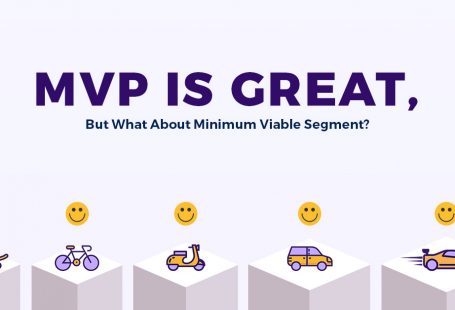Planning and success go hand in hand, and no one can deny that. Without laying the groundwork, you invite failure. You don’t travel to a new place without preparing an itinerary, do you? Similarly, if you want to build a website for your business, you better plan your website development.
You need to define your goals, estimate the budget, ideate on the website structure and design, and chalk out a strategy for the post-development work. Otherwise, there will be too many missed deadlines for you to handle. There will be too much of backtracking for you to do. Even worse, critical features might go missing from the website.
So whether you are a business owner or a website developer/designer yourself, this write-up will give you insights on the right planning. Following are the key points that should be included in your planning process:
1. Have a clear list of goals
First of all, establish the purpose behind your website development, otherwise, nothing is going to work.
Do you want to publicize your business? Do you want to sell your inventory? Do you want to promote a humanitarian cause? Have a specific answer so that you can define your target audience.
The next step is to set your marketing goals. You can set a target for the number of visitors you expect per month, or the number of visitors you expect to sign up for your newsletter, or the number of inbound-generated leads.
The key is to set goals that are specific and measurable. You can always use a tool like Google Analytics to measure your website’s performance on a monthly, weekly or even daily basis.
2. Have a budget in place
Irrespective of your organization’s size, you should plan your expenses. You should prepare a budget for website designing, programming, and web hosting, without compromising on the quality.
An ideal budget should give you a team which is meritorious, insightful and experienced. Just don’t be too tight-fisted, otherwise it may result in a below-standard website and unnecessary headaches.
3. Have a content strategy in place
It’s the content that more or less decides the bounce rate of a website. Catchy and meaningful content results in a better visitor engagement. So you must strategize your content in advance, according to your business goals and target audience. You can play around with the following content types:
- Blog posts
- Case Studies
- Videos (Testimonials or generic)
- Pictures (Team leads, Products, etc)
- Slideshows
- Embedded social media feeds (Twitter stream or Facebook)
You can prepare a monthly or quarterly plan for posting content on your website. For example, you can publish 10 blogs, 2 case studies, 5 Social Media Posts, and 1 newsletter every month. You can always experiment with the content-type and frequency. Ideally, you should hire an experienced writer, who can produce crispy and informative content.
4. Ideate on the website structure
Wireframing comes in handy while deciding on the website structure. A wireframe or a mock-up is the first draft of a website design. It represents the skeletal framework of a website and is created by tools such as Balsamiq, Axure, or Pencil Evolus. Using wireframes, you can plan the perfect layout of your website.
However, designers shouldn’t show too many details in a mock-up. They should show the headers, footers, content areas, and the overall flow between these page sections. They should ideally design a wireframe for the homepage first, and then move towards landing pages and finally to secondary pages.
5. Plan for a consistent website design
Besides content, its the aesthetic appeal of a website that matters a lot. It’s about creating an easily navigable website. Visitors shouldn’t feel cluttered while going through a website or get bombarded with content. Following are some of the guidelines to plan a visitor-friendly website:
- Perceive the needs of users. What do they want to accomplish? How will the application help them? List out goals and keep referring to these throughout the design process
- Don’t try to experiment too much with UI patterns. Rely more on the established patterns to resolve the basic issues. Just make sure you don’t use the complete layout as it is. Modify it as per the defined user goals.
- When it comes to visuals, certain elements are more noticeable than others, say for example brighter colours. So make sure that such elements represent the primary functions of your website. By doing that, you will persuade users to reach the primary functions before the secondary ones.
- Stay true to the brand’s objectives and tonality. Be it the colour schemes, typography, logo or images, everything must reflect the brand’s personality.
- The presentation of content makes or breaks the user’s interest in a website. How you layout the body copy, list items, or table content should be planned meticulously. You must focus on the areas such as drop downs, form fields, charts, validation messages etc.
- A user-friendly website must have easy-to-use applications. But what makes an application easy-to-use? It’s the consistency of its functionalities. For example, the placement of action buttons like ‘View’. Such consistency ensures that users don’t get confused or frustrated. They don’t have to search for buttons in every section. Once they learn about a functionality in one section, they can use that knowledge for every section (as there is consistency).
6. Have a testing team on board
No matter how meticulously a website is developed, a bug or two may still be there. This might make the website run improperly on browsers. It’s not a wise idea to let developers do the testing. So make sure you have a dedicated testing team well before the commencement of website development.
A good testing team will make sure that all the forms and input fields work fine. It will make sure that the website has a responsive design and all the placeholders have been replaced with relevant content.
7. Prepare a Maintenance plan
Once a website is built, it ought to represent a business or a brand for many years. Therefore it becomes essential to plan the work that is required after a website’s launch. This includes the maintenance and performance measurement of a website.
Plan for having dedicated teams for frequently posting plagiarism free content and monitoring the website’s security respectively. A feedback channel should also be in place to receive valuable inputs from users. It will certainly improve the overall performance of your website.
For measuring the performance of your website, you can always use Google Analytics. You can obtain the data on unique visitors, bounce rate, and the best-performing pages of your website.
Planning for a website development isn’t merely a brainstorming session, but a stepping stone. So prepare to invest your time and effort into it, and don’t be in a rush.
In case you are planning to build a well-planned website for your business, then go for an experienced website development team.




